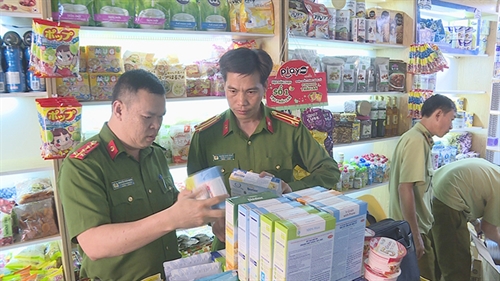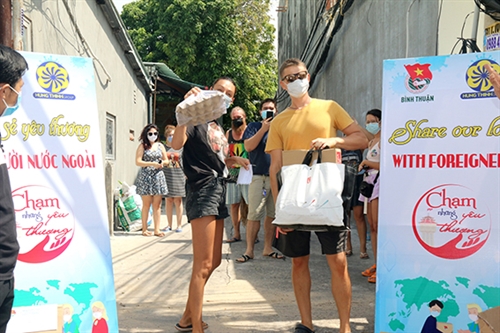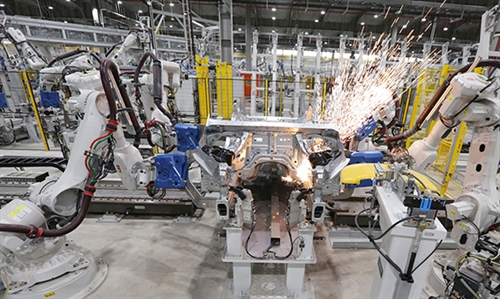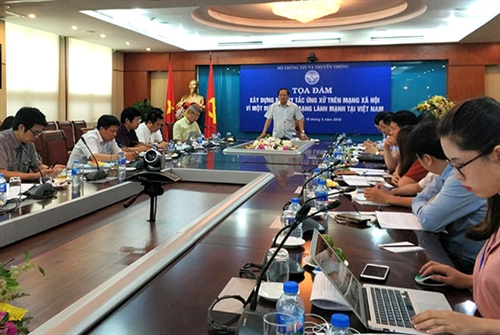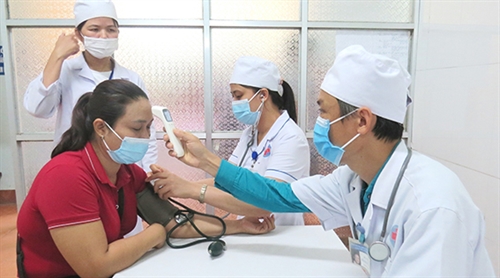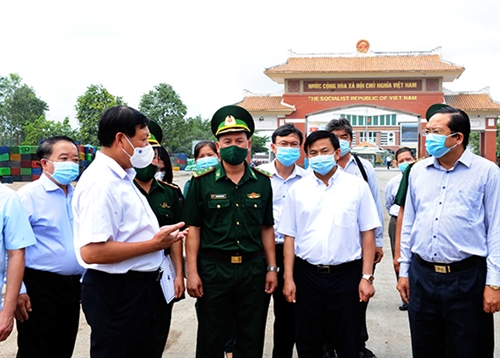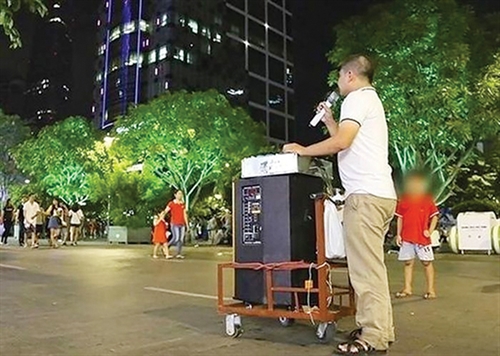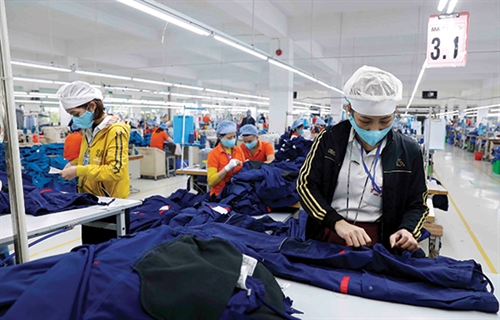In late December 2021, the entire country was shocked about the violent death of N.T.V.A., an eight-year-old girl in Ho Chi Minh City, which resulted from brutal thrashing by her father’s fiancée.
According to the initial investigation, the perpetrator, Nguyen Vo Quynh Trang, 27, had been living with V.A. and the little girl’s father, Nguyen Kim Trung Thai, 36, for more than a year after Thai divorced his ex-wife. Since then, Trang had frequently forced V.A. to do chores and beat her. On the afternoon of December 22, the young victim was brutally beaten by Trang for almost four hours and died on the way to the hospital.
Trang was arrested on December 23 and charged with “persecuting other persons” and “murder” while Thai was prosecuted for “persecuting other persons” and “concealing crimes”.
This was regrettably not the only case of fatal child abuse in recent memories.
In late 2020, N.T.M.M., a three-year-old girl in Hanoi, was beaten to death by her mother’s lover, Nguyen Minh Tuan, 30. Tuan was later sentenced to capital punishment and the mother, Nguyen Thi Lan Anh, 29, was subject to life imprisonment. Most recently in the last quarter of 2021, L.H.A., a six-year-old girl in Hanoi, was killed by her own father in a fit of anger when he was helping her with school assignments.
The three poor girls were among thousands of child victims of serious violence across the country. According to statistics of the Ministry of Labor, Invalids and Social Affairs (MOLISA), there are more than 2,000 reported cases of serious child abuse and maltreatment every year, mostly by someone known and trusted by the victims. In the last two years, 120 children had died from physical abuse. It is reported in an article published on the local newswire VnExpress International that every month, the child protection helpline 111 receives around 30,000 calls. “But during the COVID-19 pandemic, when lockdowns and social distancing coupled with social and economic pressures have led to an increase in domestic violence against women and children worldwide, child abuse in Vietnam has also been on the rise with the number of calls jumping to 40-50 thousand a month,” the article read.
 |
A playground for children in Times City urban center in Hanoi__Photo: Lam Khanh/VNA |
| A playground for children in Times City urban center in Hanoi__Photo: Lam Khanh/VNA |
Legal provisions on handling of physical abuse of children
Vietnam was among the first countries to ratify the United Nations Convention on the Right of the Child and it must be affirmed that child protection, care and education have always been considered a top priority of the Vietnamese State. The 2013 Constitution of Vietnam stipulates: “Children shall be protected, cared for and educated by the State, family and society” and “harassing, persecuting, maltreating, abandoning or abusing children, exploiting child labor or committing other acts that violate children’s rights are prohibited[1].”
Until now, the country has managed to formulate a legal framework regulating child-related issues in general and child abuse in particular. In 1991, Vietnam adopted its first-ever Law on Child Protection, Care and Education. In 2004, the 25-article Law was replaced with a more extensive and updated version with 60 articles, stressing that children have the right to be cared for and nurtured for them to develop physically, intellectually, spiritually and morally[2] and all acts of infringing upon children’s rights, causing harms to normal development of children will be strictly handled in accordance with law[3]. In order to facilitate law enforcement activities, the latest Law on Children, enacted in 2016, introduces a clear definition of child abuse, i.e., any act that causes harms to the physical strength, emotion, psychology, honor and dignity of children in the form of violence, exploitation, sexual abuse, trafficking, abandonment, or neglect, or other harmful forms[4].
Regarding the criminal handling of violence against children, according to the 2015 Penal Code, revised in 2017, perpetrators will, depending on the nature of their acts, be charged for the crime of ill-treating persons; persecuting other persons; intentionally inflicting injury to, or causing harm to the health of, other persons; or murder under Article 185, 140, 134 or 123 of the Penal Code, respectively, with the most severe punishment being death penalty. Those whose violations are not serious enough for examination of penal liability will face administrative penalties.
Reasons behind rampant cases of violence against children
Looking at the above-said regulations, it can be said the current law has so far identified acts of child abuse and at the same time devised penalties for violators. However, it seems not enough to guarantee the safety for children. According to experts, the alarming child abuse in the country is attributable to several causes, such as misconception of child discipline, social indifference of child violence, and light penalties for perpetrators.
The United Nations Children’s Fund (UNICEF) Vietnam, in a report titled “Protecting Children from Violence”, commented: “Yet, violent discipline is still widespread in Vietnam with 68.4 percent of children aged 1-14 having reported experiencing some form of violence in the home by their parents or caregivers. In many families, violence is used as a means to establish male hierarchies and reinforce masculinity. Such behavior is influenced by parents’ financial security, level of education and issues such as alcohol or drug abuse.[5]” This is the first issue that must be addressed.
In a talk with Tuoi Tre Online, Director of the MOLISA’s Department of Children Affairs Dang Hoa Nam said: “In a civilized, progressive and law-ruled society that we are jointly building, teaching children by whipping, violence, or trampling should not exist.”
It is a sad fact that most cases of serious violence against children were detected too late. In both cases of V.A. and M.M., neighbors who lived near the victims’ homes later admitted that they heard the girls crying but did not interfere.
“Neighbors may think it is best not to get involved because different families have different parenting styles, so they choose to ignore all the signs, believing it is a family affair,” Nguyen Duc Loc, Director of the Ho Chi Minh City-based Social Life Research Institute, was quoted by the VnExpress International as saying.
According to Nguyen Thuy Uyen Phuong, an education researcher and practitioner in Ho Chi Minh City, former Ph.D. student at University of Illinois, the U.S., there should be a community mechanism to protect children. “The reason is that if a person does evil things without being supervised, he will assume that it is the right thing to do. In case of violence against children, I believe that the perpetrators did not want to kill the children so that they can be imprisoned, but when they had abused the children for a long time without being stopped, their evil behavior would escalate over time and cause heartbreaking consequences,” Phuong shared her opinions in an article on Thanh Nien newspaper. “If surrounding people step in, keep their eyes on, denounce child abuse acts to authorities, and raise their voice in defense of children, violence against children will reduce and vice versa,” she added.
What to do to prevent violence against children
In a statement released in response to the heartbreaking death of V.A., UNICEF representative to Vietnam Rana Flowers said the country urgently needs a stronger protection system for women and children and a zero-tolerance attitude toward violence.
Such a system should be comprised of not volunteers or untrained welfare officers, but instead should consist of qualified professional social workers who can identify, intervene, and respond to the needs of children and women in order to ensure their safety, the statement read.
This system should also cover training for law enforcement and legal officials, such as judges, and should be centered on a zero-tolerance attitude toward violence.
As read in the UNICEF statement, “zero-tolerance” means that a neighbor or anyone else who witnesses or hears violence immediately notifies it to authorities, rather than brushes it off, waits for it to progress, or ignores it completely. It also means that police should be held accountable for taking action against such violence and that health workers and teachers who recognize signs of violence immediately inform them to authorities.
In addition, community-based solutions, including relocating perpetrators, must be taken so that children and women can continue to live safely at home, the UNICEF official said.
Rana Flowers called on the public to do more to protect those made vulnerable and to raise the awareness among women and children that violence in any form is not acceptable. “Reaching out for help to make it stop is essential,” she said.
Investigator Bui Vo from the Supreme People’s Procuracy, in an op-ed he wrote for the online newspaper VnExpress, analyzed two shortcomings of the current legislation governing child abuse crimes.
Firstly, the penalties for perpetrators of child abuse remain relatively light. Under Article 140 of the 2015 Penal Code, those who commit the act of persecuting children would face an imprisonment sentence of just one to three years, even in case of causing mental and behavioral disorders to the victim with an injury rate of 31 percent or higher (serious injury). Furthermore, in some cases, the offenders may have their imprisonment sentences suspended in “extenuating circumstances”.
Secondly, the current criminal law fails to oblige those who detect child abuse acts to report such acts to authorities. Although the 2015 Penal Code provides for the offense of “failure to denounce crimes” in its Articles 19 and 390, it does not impose the obligation to denounce child-related crimes such as “persecuting others” or “intentionally conflicting injuries to others”.
This is a big problem because child abuse usually takes place behind closed doors, close relatives are often the only ones who witness and could report it. Hence, if such persons do not denounce child abuse acts, it would be extremely difficult for functional agencies to take timely intervention and protect children.
“This is the right time to revise the penal law to better protect children,” Vo confirmed, proposing that persons who witness or detect child abuse acts but fail to denounce them should also bear responsibility.-

